Mar
06
2025
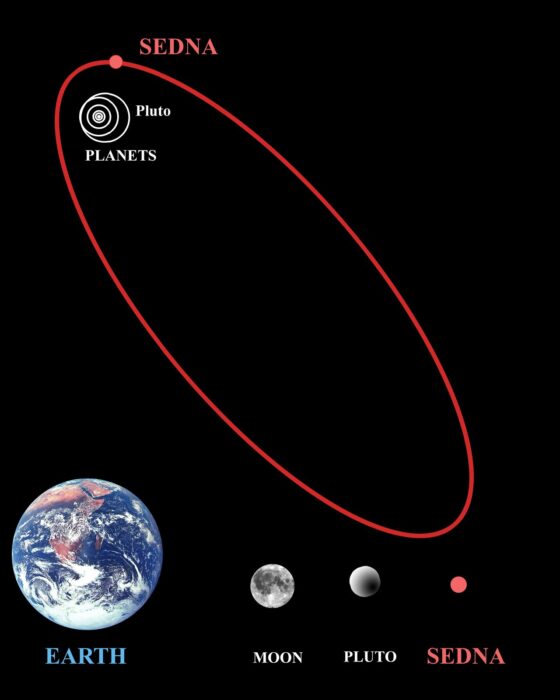
In 2006 (yes, it was that long ago – yikes) the International Astronomical Union (IAU) officially adopted the definition of dwarf planet – they are large enough for their gravity to pull themselves into a sphere, they orbit the sun and not another larger body, but they don’t gravitationally dominate their orbit. That last criterion is what separates planets (which do dominate their orbit) from dwarf planets. Famously, this causes Pluto to be “downgraded” from a planet to a dwarf planet. Four other objects also met criteria for dwarf planet – Ceres in the asteroid belt, and three Kuiper belt objects, Makemake, Haumea, and Eris.
The new designation of dwarf planet came soon after the discovery of Sedna, a trans-Neptunian object that could meet the old definition of planet. It was, in fact, often reported at the time as the discovery of a 10th planet. But astronomers feared that there were dozens or even hundreds of similar trans-Neptunian objects, and they thought it was messy to have so many planets in our solar system. That is why they came up with the whole idea of dwarf planets. Pluto was just caught in the crossfire – in order to keep Sedna and its ilk from being planets, Pluto had to be demoted as well. As a sort-of consolation, dwarf planets that were also trans-Neptunian objects were named “plutoids”. All dwarf planets are plutoids, except Ceres, which is in the asteroid belt between Mars and Jupiter.
So here we are, two decades later, and I can’t help wondering – where are all the dwarf planets? Where are all the trans-Neptunian objects that astronomers feared would have to be classified as planets that the dwarf planet category was specifically created for? I really thought that by now we would have a dozen or more official dwarf planets. What’s happening? As far as I can tell there are two reasons we are still stuck with only the original five dwarf planets.
Continue Reading »
Jan
20
2025
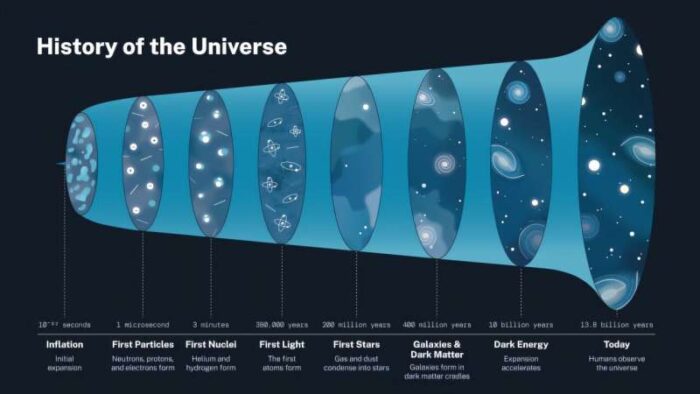
There really is a significant mystery in the world of cosmology. This, in my opinion, is a good thing. Such mysteries point in the direction of new physics, or at least a new understanding of the universe. Resolving this mystery – called the Hubble Tension – is a major goal of cosmology. This is a scientific cliffhanger, one which will unfortunately take years or even decades to sort out. Recent studies have now made the Hubble Tension even more dramatic.
The Hubble Tension refers to discrepancies in measuring the rate of expansion of the universe using different models or techniques. We have known since 1929 that the universe is not static, but it is expanding. This was the famous discovery of Edwin Hubble who notice
d that galaxies further from Earth have a greater red-shift, meaning they are moving away from us faster. This can only be explained as an expanding universe – everything (not gravitationally bound) is moving away from everything else. This became known as Hubble’s Law, and the rate of expansion as the Hubble Constant.
Then in 1998 two teams, the Supernova Cosmology Project and the High-Z Supernova Search Team, analyzing data from Type 1a supernovae, found that the expansion rate of the universe is actually accelerating – it is faster now than in the distant past. This discovery won the Nobel Prize in physics in 2011 for Adam Riess, Saul Perlmutter, and Brian Schmidt. The problem remains, however, that we have no idea what is causing this acceleration, or even any theory about what might have the necessary properties to cause it. This mysterious force was called “dark energy”, and instantly became the dominant form of mass-energy in the universe, making up 68-70% of the universe.
I have seen the Hubble Tension framed in two ways – it is a disconnect between our models of cosmology (what they predict) and measurements of the rate of expansion, or it is a disagreement between different methods of measuring that expansion rate. The two main methods of measuring the expansion rate are using Type 1a supernovae and by measuring the cosmic background radiation. Type 1a supernovae are considered standard candle because they have roughly the same absolute magnitude (brightness). The are white dwarf stars in a binary system that are siphoning off mass from their partner. When they reach a critical point of mass, they go supernova. So every Type 1a goes supernova with the same mass, and therefore the same brightness. If we know an object’s absolute magnitude of brightness, then we can calculate its distance. It was this data that lead to the discovery that the universe is accelerating.
Continue Reading »
Dec
03
2024
Astrophysicists come up with a lot of whacky ideas, some of which actually turn out to be possibly true (like the Big Bang, black holes, accelerating cosmic expansion, dark matter). Of course, all of these conclusions are provisional, but some are now backed by compelling evidence. Evidence is the real key – often the challenge is figuring out a way to find evidence that can potentially support or refute some hypothesis about the cosmos. Sometimes it’s challenging to figure out even theoretically (let alone practically) how we might prove or disprove a hypothesis. Decades may go buy before we have the ability to run relevant experiments or make the kinds of observations necessary.
Black holes fell into that category. They were predicted by physics long before we could find evidence of their existence. There is a category of black hole, however, that we still have not confirmed through any observation – primordial black holes (PBH). As the name implies, these black holes may have been formed in the early universe, even before the first stars. In the early dense universe, fluctuations in the density of space could have lead to the formation of black holes. These black holes could theoretically be of any size, since they are not dependent on a massive star collapsing to form them. This process could lead to black holes smaller than the smaller stellar remnant black hole.
In fact, it is possible that there are enough small primordial black holes out there to account for the missing dark matter – matter we can detect through its gravitational effects but that we cannot otherwise see (hence dark). PBHs are considered a dark matter candidate, but the evidence for this so far is not encouraging. For example, we might be able to detect black holes through microlensing. If a black hole happens to pass in front of a more distant star (from the perspective of an observer on Earth), then gravitational lensing will cause that star to appear to brighten, until the black hole passes. However, microlensing surveys have not found the number of microlensing events that would be necessary for PBHs to explain dark matter. Dark matter makes up 85% of the matter in the universe, so there would have to be lots of PBHs to be the sole cause of dark matter. It’s still possible that longer observation times would detect larger black holes (brightening events can take years if the black holes are large). But so far there is a negative result.
Continue Reading »
Oct
17
2024
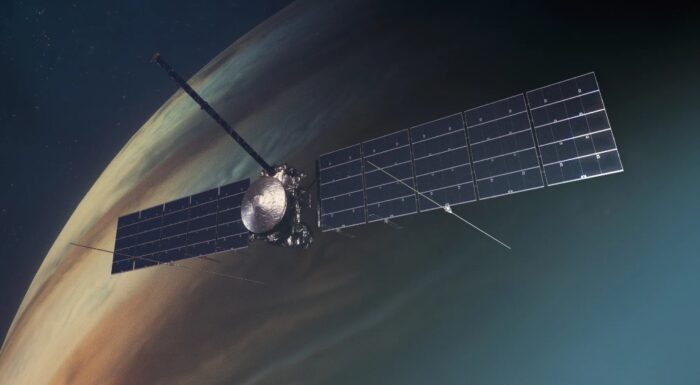 I wrote earlier this week about the latest successful test of Starship and the capture of the Super Heavy booster by grabbing arms of the landing tower. This was quite a feat, but it should not eclipse what was perhaps even bigger space news this week – the launch of NASAs Clipper probe to Europa. If all goes well the probe will enter orbit around Jupiter in 2030.
I wrote earlier this week about the latest successful test of Starship and the capture of the Super Heavy booster by grabbing arms of the landing tower. This was quite a feat, but it should not eclipse what was perhaps even bigger space news this week – the launch of NASAs Clipper probe to Europa. If all goes well the probe will enter orbit around Jupiter in 2030.
Europa is one of the four large moons of Jupiter. It’s an icy world but one with a subsurface ocean – an ocean that likely contains twice as much water as the oceans of Earth combined. Europa is also one of the most likely locations in our solar system for life outside Earth. It is possible that conditions in that ocean are habitable to some form of life. Europa, for example, has a rocky core, which may still be molten, heating Europa from the inside and seeding its ocean with minerals. Chemosynthetic organisms survive around volcanic vents on Earth, so we know that life can exist without photosynthesis and Europa might have the right conditions for this.
But there is still a lot we don’t know about Europa. Previous probes to Jupiter have gathered some information, but Clipper will be the first dedicated Europa probe. It will make 49 close flybys over a 4 year primary mission, during which it will survey its magnetic field, gravity, and chemical composition. Perhaps most exciting is that Clipper is equipped with instruments that can sample any material around Europa. The hope is that Clipper will be able to fly through a plume of material shooting up geyser-like from the surface. It would then be able to detect the chemical composition of Europa material, especially looking for organic compounds.
Continue Reading »
Oct
03
2024
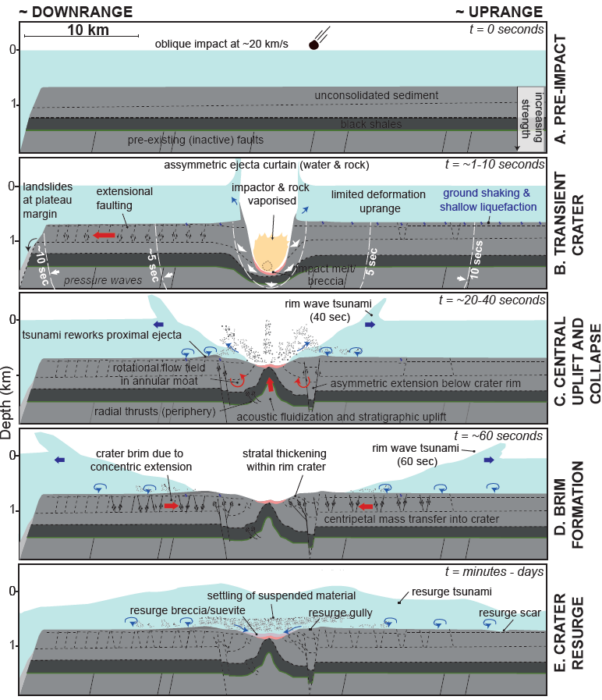 It is now generally accepted that 66 million years ago a large asteroid smacked into the Earth, causing the large Chicxulub crater off the coast of Mexico. This was a catastrophic event, affecting the entire globe. Fire rained down causing forest fires across much of the globe, while ash and debris blocked out the sun. A tsunami washed over North America – one site in North Dakota contains fossils from the day the asteroid hit, including fish with embedded asteroid debris. About 75% of species went extinct as a result, including all non-avian dinosaurs.
It is now generally accepted that 66 million years ago a large asteroid smacked into the Earth, causing the large Chicxulub crater off the coast of Mexico. This was a catastrophic event, affecting the entire globe. Fire rained down causing forest fires across much of the globe, while ash and debris blocked out the sun. A tsunami washed over North America – one site in North Dakota contains fossils from the day the asteroid hit, including fish with embedded asteroid debris. About 75% of species went extinct as a result, including all non-avian dinosaurs.
For a time there has been an alternate theory that intense vulcanism at the Deccan Traps near modern-day India is what did-in the dinosaurs, or at least set them up for the final coup de grace of the asteroid. I think the evidence strongly favors the asteroid hypothesis, and this is the way scientific opinion has been moving. Although the debate is by no means over, a majority of scientists now accept the asteroid hypothesis.
But there is also a wrinkle to the impact theory – perhaps there was more than one asteroid impact. I wrote in 2010 about this question, mentioning several other candidate craters that seem to date to around the same time. Now we have a new candidate for a second KT impact – the Nadir crater off the coast of West Africa.
Geologists first published about the Nadir crater in 2022, discussing it as a candidate crater. They wrote at the time:
“Our stratigraphic framework suggests that the crater formed at or near the Cretaceous-Paleogene boundary (~66 million years ago), approximately the same age as the Chicxulub impact crater. We hypothesize that this formed as part of a closely timed impact cluster or by breakup of a common parent asteroid.”
Continue Reading »
Sep
26
2024
 Of every world known to humans outside the Earth, Mars is likely the most habitable. We have not found any genuinely Earth-like exoplanets. They are almost sure to exist, but we just haven’t found any yet. The closest so far is Kepler 452-b, which is a super Earth, specifically 60% larger than Earth. It is potentially in the habitable zone, but we don’t know what the surface conditions are like. Within our own solar system, Mars is by far more habitable for humans than any other world.
Of every world known to humans outside the Earth, Mars is likely the most habitable. We have not found any genuinely Earth-like exoplanets. They are almost sure to exist, but we just haven’t found any yet. The closest so far is Kepler 452-b, which is a super Earth, specifically 60% larger than Earth. It is potentially in the habitable zone, but we don’t know what the surface conditions are like. Within our own solar system, Mars is by far more habitable for humans than any other world.
And still, that’s not very habitable. It’s surface gravity is 38% that of Earth, it has no global magnetic field to protect against radiation, and its surface temperature ranges from -225°F (-153°C) to 70°F (20°C), with a median temperature of -85°F (-65°C). But things might have been different, and they were in the past. Once upon a time Mars had a more substantial atmosphere – today its atmosphere is less than 1% as dense as Earth’s. That atmosphere was not breathable, but contained CO2 which warmed the planet allowing for there to be liquid water on the surface. A human could likely walk on the surface of Mars 3 billion years ago with just a face mask and oxygen tank. But then the atmosphere mostly went away, leaving Mars the dry barren world we see today. What happened?
It’s likely that the primary factor was the lack of a global magnetic field, like we have on Earth. Earth’ magnetic field is like a protective shield that protects the Earth from the solar wind, which is charged so the particles are mostly diverted away from the Earth or drawn to the magnetic poles. On Mars the solar wind did not encounter a magnetic field, and it slowly stripped away the atmosphere on Mars. If we were somehow able to reconstitute a thick atmosphere on Mars, it too would slowly be stripped away, although that would take thousands of years to be significant, and perhaps millions of years in total.
Continue Reading »
Aug
23
2024
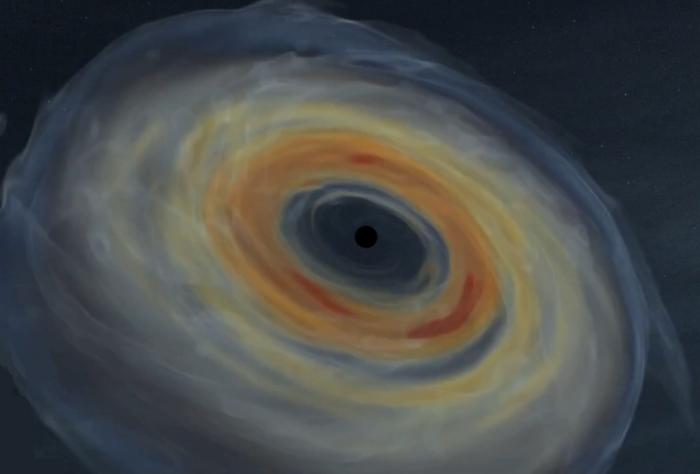 The state of modern science and technology is truly amazing, much more so than the fake stuff that people like to spread around. Gravitational waves have opened up an entirely new type of astronomy, a way to explore the universe through very subtle ripples in spacetime produce by powerful gravitational events. Einstein predicted the existence of gravitational waves in 1916, but it took decades to develop the technology to actually detect them. Their existence was inferred from neutron star observations in 1974, but they were not directly detected until 2015, almost a century after their prediction.
The state of modern science and technology is truly amazing, much more so than the fake stuff that people like to spread around. Gravitational waves have opened up an entirely new type of astronomy, a way to explore the universe through very subtle ripples in spacetime produce by powerful gravitational events. Einstein predicted the existence of gravitational waves in 1916, but it took decades to develop the technology to actually detect them. Their existence was inferred from neutron star observations in 1974, but they were not directly detected until 2015, almost a century after their prediction.
The Laser Interferometer Gravitational Wave Observer (LIGO) uses the interference at the intersection of two lasers at right angles to each other to detect tiny fluctuations in spacetime. Each laser travels through an arm 4 kilometers long. It is sensitive enough to detect changes 1/10,000 the diameter of a proton.
Using LIGO many gravitational wave events have been detected, all involving the merger of massive bodies – some combination of neutron stars and black holes. A new study, however, uses computer simulations to predict another potential source of gravitational waves – collapsars.
What are collapsars? They result from the death of rapidly spinning large stars, 15-20 solar masses. When they run out of fuel to keep their cores burning they rapidly collapse under their massive gravity, and then they explode from all that matter crashing into itself. This results in the formation of a black hole at the core, surrounded by a lot of mass that is leftover. This mass swirls rapidly around the black hole and is quickly consumed, within minutes. This large rapidly moving mass is what causes the gravitational waves – at least that is what is predicted by the current model. d
Continue Reading »
Jul
16
2024
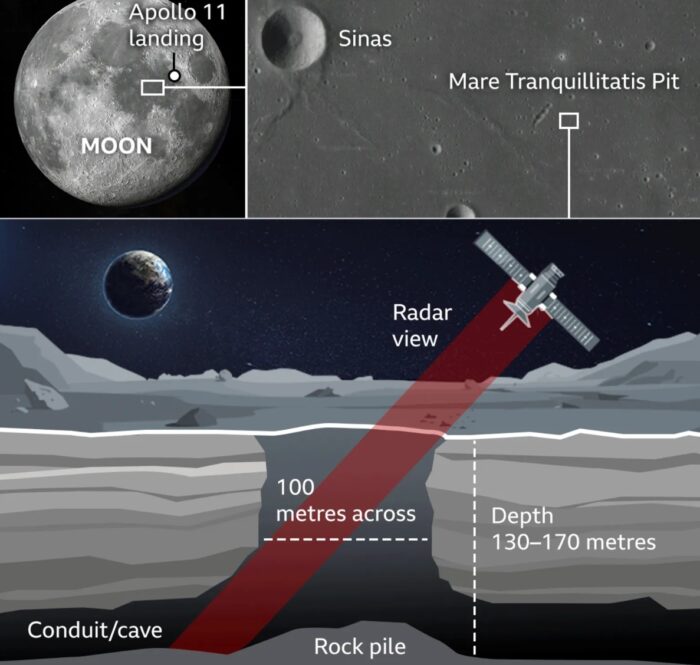 Astronomers have discovered multiple “pits” on the surface of the moon – these look superficially like craters, but on closer inspection are actually vertical pits. There has been considerable speculation that these pits might be cave openings. Now, an analysis of data from the Lunar Reconnaissance Orbiter from 2010 reveals that at least one of these pits is in fact a cave opening.
Astronomers have discovered multiple “pits” on the surface of the moon – these look superficially like craters, but on closer inspection are actually vertical pits. There has been considerable speculation that these pits might be cave openings. Now, an analysis of data from the Lunar Reconnaissance Orbiter from 2010 reveals that at least one of these pits is in fact a cave opening.
The pit is located in the Mare Tranquillitatis, near the site of the Apollo 11 landing (the Sea of Tranquility) and is therefore called the Mare Tranquillitatis Pit (MTP). It is 100 meters across and 130-170 meters deep. The study used radar data at a downward angle which was able to image the sides of the bottom of the pit, showing that there is a possible conduit there for an underground cave system. This conduit is at least tens of meters long, but could be much larger.
While this is exciting, it’s not surprising. One hypothesis is that these lunar pits are “skylights” of underground cave systems, carved out by lava tubes when the Moon was more geologically active. If true, then it’s possible that they are extensive, and can also be quite large. Why is this so exciting?
There are two main reasons NASA and others are interested in lunar caves. One is geological – such cave systems might be billions of years old, and therefore can preserve lunar rocks by protecting them from the radiation and micro meteors that pummel the lunar surface. When we send astronauts back to the Moon (or even just highly capable robots) they could explore these caves and are likely to make some interesting discoveries about the Moon.
But the second application is the most intriguing. I have deliberately buried the lede here, partly because I suspect most readers know where this story is going. Such lunar caves could be ideal locations for future lunar bases. This is for the same reason they are good locations to do some geological investigations on the Moon – the caves are protected. This is something that science fiction shows give very short shrift to, and for this reason perhaps is greatly underappreciated by the public. Space is a very dangerous place, and not just because it’s largely a cold vacuum. Space is full of radiation, and stellar systems are full of fast-moving debris.
Continue Reading »
Jun
11
2024
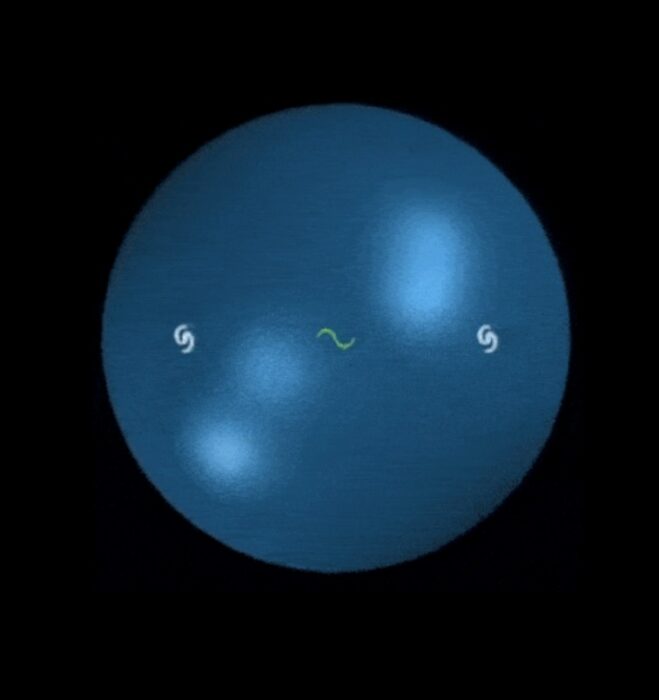 Commenter Lal asks in the topic suggestions:
Commenter Lal asks in the topic suggestions:
“Media reports that light has been travelling from that distant galaxy for 13 and a half billion years, which I assume is true, but this neither represents the original nor the current distance to that galaxy in terms of light years. I would be interested to know where we lie in the expanding universe compared to these distant galaxies.”
This is a good question, and is challenging to grasp. We need experts who have been thinking about this for decades and who actually understand what’s happening and who can explain it well. Here, I think, is an excellent discussion of this very question. I’ll give a quick summary, but for those interested, you may want to read the full article.
The basic background is that, according to modern cosmological theory, which includes the Big Bang, the universe was a singularity – one point that contained all of spacetime and all matter and energy – about 13.7 billion years ago. This point underwent rapid expansion, at first very rapid, called the inflationary period. Then it continued to rapidly expand, although at a much slower pace, although this rate of expansion has been increasing over time due to dark energy. What happens to the universe when it expands? It’s important to note first that the universe is not expanding into space – space-time itself is expanding.
Matter in the universe gets less dense and hot as the universe expands. At first matter was too hot for particles to exist. Once it cooled enough for protons and neutrons to exist, they mostly formed into hydrogen, but that was still too hot to hold onto electrons so the matter was all plasma. That eventually cooled enough for hydrogen (and some helium and a tiny bit of lithium) atoms to exist – at about 380,000 years after the Big Bang. Since then the matter in the universe has continued to cool and become less dense. However, it was also able to form stars, galaxies, heavier elements, and then lots of interesting things like people.
Continue Reading »
Feb
12
2024
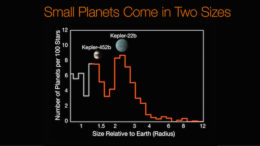 As of this writing, there are 5,573 confirmed exoplanets in 4,146 planetary systems. That is enough exoplanets, planets around stars other than our own sun, that we can do some statistics to describe what’s out there. One curious pattern that has emerged is a relative gap in the radii of exoplanets between 1.5 and 2.0 Earth radii. What is the significance, if any, of this gap?
As of this writing, there are 5,573 confirmed exoplanets in 4,146 planetary systems. That is enough exoplanets, planets around stars other than our own sun, that we can do some statistics to describe what’s out there. One curious pattern that has emerged is a relative gap in the radii of exoplanets between 1.5 and 2.0 Earth radii. What is the significance, if any, of this gap?
First we have to consider if this is an artifact of our detection methods. The most common method astronomers use to detect exoplanets is the transit method – carefully observe a star over time precisely measuring its brightness. If a planet moves in front of the star, the brightness will dip, remain low while the planet transits, and then return to its baseline brightness. This produces a classic light curve that astronomers recognize as a planet orbiting that start in the plane of observation from the Earth. The first time such a dip is observed that is a suspected exoplanet, and if the same dip is seen again that confirms it. This also gives us the orbital period. This method is biased toward exoplanets with short periods, because they are easier to confirm. If an exoplanet has a period of 60 years, that would take 60 years to confirm, so we haven’t confirmed a lot of those.
There is also the wobble method. We can observe the path that a star takes through the sky. If that path wobbles in a regular pattern that is likely due to the gravitational tug from a large planet or other dark companion that is orbiting it. This method favors more massive planets closer to their parent star. Sometimes we can also directly observe exoplanets by blocking out their parent star and seeing the tiny bit of reflected light from the planet. This method favors large planets distant from their parent star. There are also a small number of exoplanets discovered through gravitational microlensing, and effect of general relativity.
None of these methods, however, explain the 1.5 to 2.0 radii gap. It’s also likely not a statistical fluke given the number of exoplanets we have discovered. Therefore it may be telling us something about planetary evolution. But there are lots of variables that determine the size of an exoplanet, so it can be difficult to pin down a single explanation.
Continue Reading »



 I wrote earlier this week about the latest successful test of Starship and the capture of the Super Heavy booster by grabbing arms of the landing tower. This was quite a feat, but it should not eclipse what was perhaps even bigger space news this week – the launch of
I wrote earlier this week about the latest successful test of Starship and the capture of the Super Heavy booster by grabbing arms of the landing tower. This was quite a feat, but it should not eclipse what was perhaps even bigger space news this week – the launch of  It is now generally accepted that 66 million years ago a large asteroid smacked into the Earth, causing the large Chicxulub crater off the coast of Mexico. This was a catastrophic event, affecting the entire globe. Fire rained down causing forest fires across much of the globe, while ash and debris blocked out the sun. A tsunami washed over North America – one site in North Dakota
It is now generally accepted that 66 million years ago a large asteroid smacked into the Earth, causing the large Chicxulub crater off the coast of Mexico. This was a catastrophic event, affecting the entire globe. Fire rained down causing forest fires across much of the globe, while ash and debris blocked out the sun. A tsunami washed over North America – one site in North Dakota  Of every world known to humans outside the Earth, Mars is likely the most habitable. We have not found any genuinely Earth-like exoplanets. They are almost sure to exist, but we just haven’t found any yet. The closest so far is Kepler 452-b, which is a super Earth, specifically 60% larger than Earth. It is potentially in the habitable zone, but we don’t know what the surface conditions are like. Within our own solar system, Mars is by far more habitable for humans than any other world.
Of every world known to humans outside the Earth, Mars is likely the most habitable. We have not found any genuinely Earth-like exoplanets. They are almost sure to exist, but we just haven’t found any yet. The closest so far is Kepler 452-b, which is a super Earth, specifically 60% larger than Earth. It is potentially in the habitable zone, but we don’t know what the surface conditions are like. Within our own solar system, Mars is by far more habitable for humans than any other world. The state of modern science and technology is truly amazing, much more so than the fake stuff that people like to spread around. Gravitational waves have opened up an entirely new type of astronomy, a way to explore the universe through very subtle ripples in spacetime produce by powerful gravitational events. Einstein predicted the existence of gravitational waves in 1916, but it took decades to develop the technology to actually detect them. Their existence was inferred from neutron star observations in 1974, but they were not
The state of modern science and technology is truly amazing, much more so than the fake stuff that people like to spread around. Gravitational waves have opened up an entirely new type of astronomy, a way to explore the universe through very subtle ripples in spacetime produce by powerful gravitational events. Einstein predicted the existence of gravitational waves in 1916, but it took decades to develop the technology to actually detect them. Their existence was inferred from neutron star observations in 1974, but they were not  Astronomers have discovered multiple “pits” on the surface of the moon – these look superficially like craters, but on closer inspection are actually vertical pits. There has been considerable speculation that these pits might be cave openings. Now,
Astronomers have discovered multiple “pits” on the surface of the moon – these look superficially like craters, but on closer inspection are actually vertical pits. There has been considerable speculation that these pits might be cave openings. Now,  Commenter Lal asks in the topic suggestions:
Commenter Lal asks in the topic suggestions: As of this writing, there are
As of this writing, there are 




